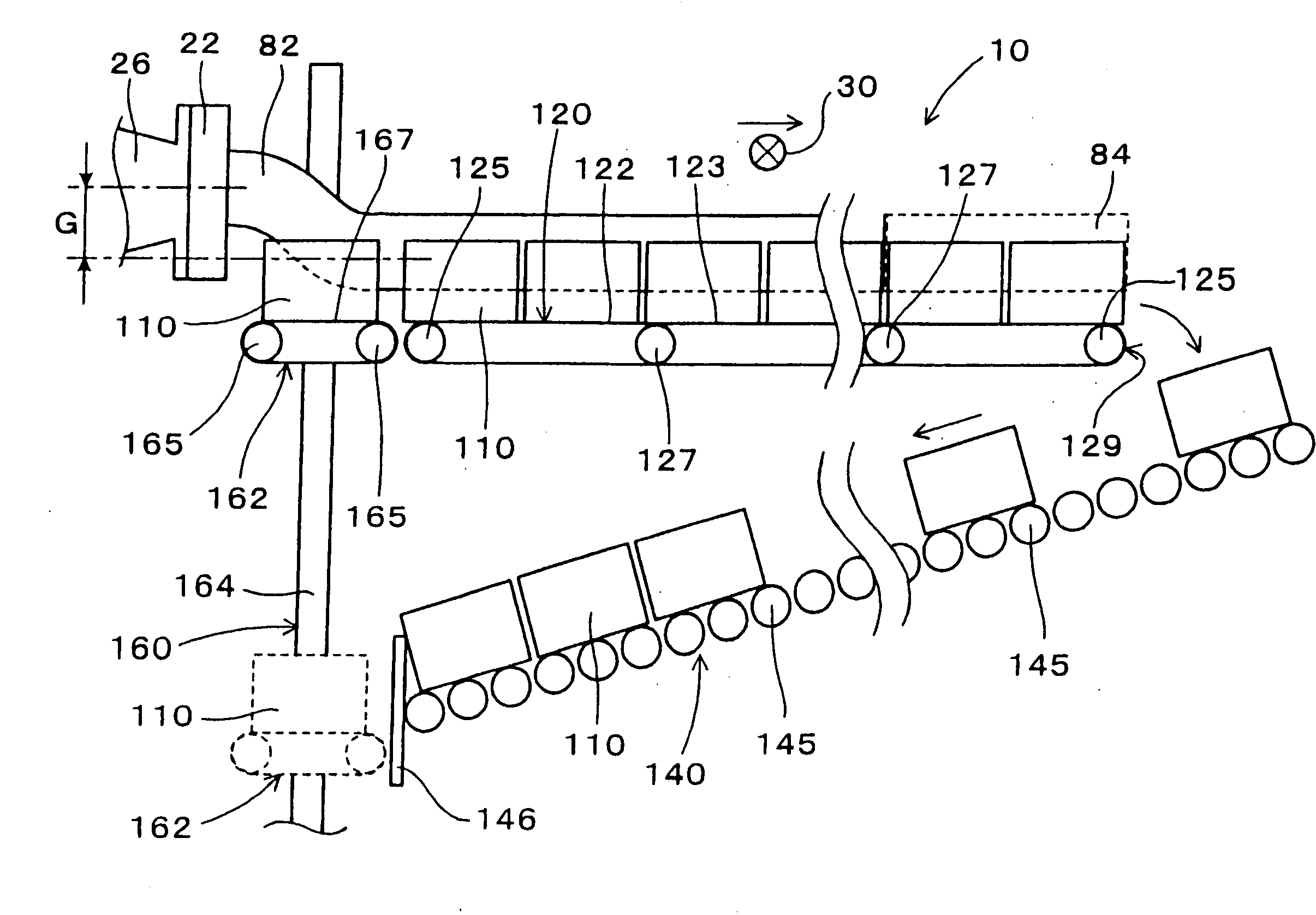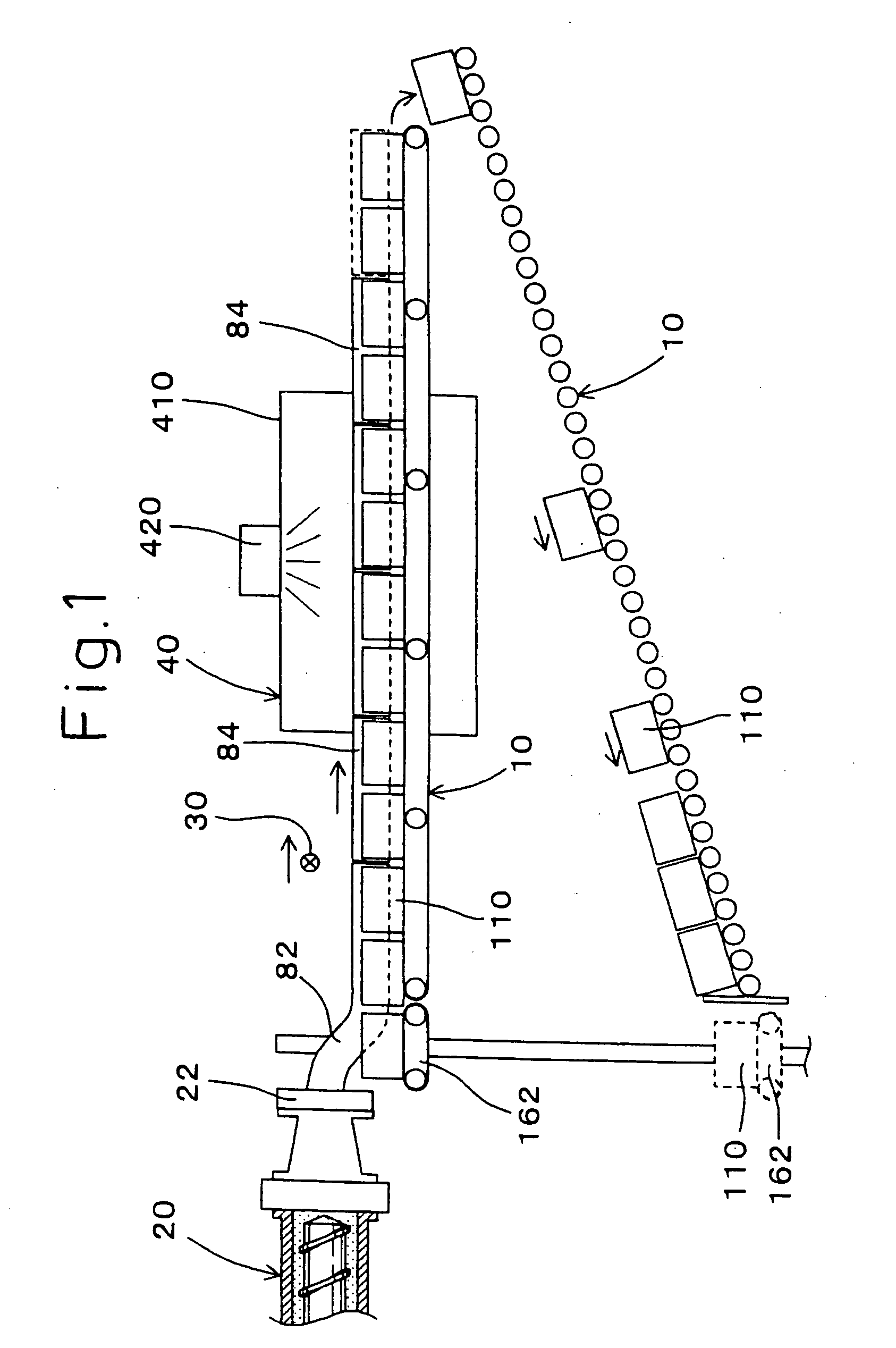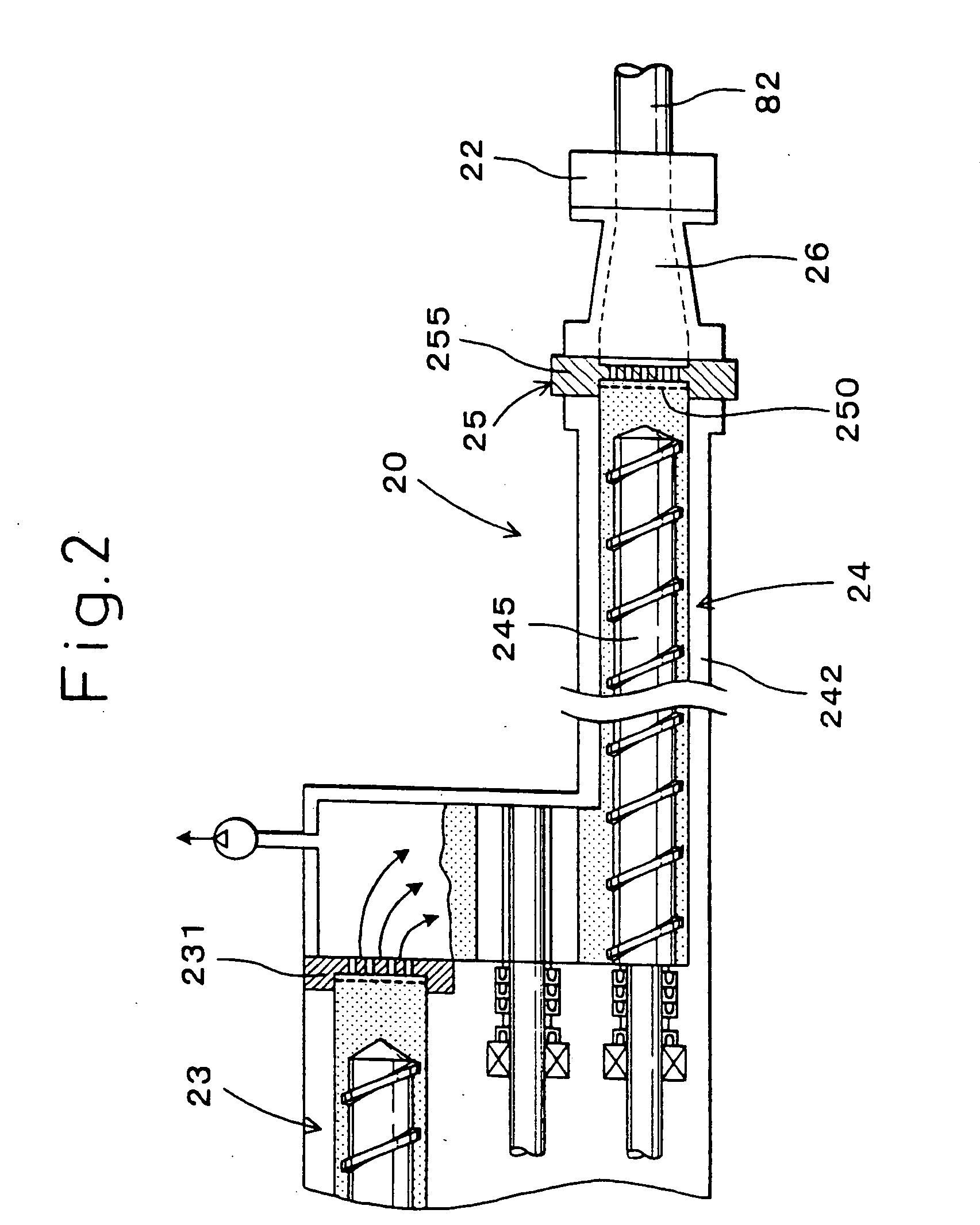Method of conveying ceramic moldings
a technology for conveying equipment and ceramic moldings, which is applied in the direction of ceramic shaping equipment, transportation and packaging, manufacturing tools, etc., can solve the problems of rod-like ceramic molding, rod-like ceramic molding for manufacturing the final ceramic molding is extremely soft and weak, and is prone to deformation
- Summary
- Abstract
- Description
- Claims
- Application Information
AI Technical Summary
Benefits of technology
Problems solved by technology
Method used
Image
Examples
first embodiment
[0062] With reference to FIGS. 1 to 7, an apparatus for conveying ceramic moldings of the present invention will be explained. Initially, a first embodiment will be described below.
[0063] This embodiment relates to a conveying apparatus 10 for guiding a non-cut rod-like ceramic molding 82 continuously extrusion-molded from a mold 22 and extending from the mold 22 to a cutter 30 in which the rod-like ceramic molding.82 is cut to be ceramic blocks 84, as shown in FIG. 1.
[0064] The conveying apparatus 10 has a plurality of pads 110, each provided with a placement surface to be brought into contact with the outer circumference of the rod-like ceramic molding 82 and place the same thereon. The placement surface of the pad 110 has a length less than a half of an axial length of the ceramic block 84 to be cut from the rod-like ceramic molding 82 in the cutter 30.
[0065] It is arranged that the respective portion in the rod-like ceramic molding 82 to be cut into the ceramic block 84 is sup...
second embodiment
[0119] Next, the present invention will be described below.
[0120] In the second embodiment, a method for supplying the pad is changed while using a conveying apparatus based on that used in the first embodiment.
[0121] As shown in FIG. 8, according to a conveying apparatus 100 in the second embodiment, a belt 222 of a conveyor 220 is formed by joining a plurality of generally flat conveyor plates 224 together, each being larger than a bottom surface of the pad 110, in the conveying direction. To a conveyor surface 223, which is a surface of the conveyor plate 224, one pad 110 is bonded. Also, it is adapted to advance the belt 222 of the conveyor 220 in the extruding direction by the rotation of a rotary roller 225.
[0122] The rod-like ceramic molding 82 continuously extruded from the mold 22 is placed on the pad 110 bonded to the conveyor surface 223.
[0123] According to the conveying apparatus 100 of this embodiment, the operation and effect of the present invention is achievable b...
PUM
| Property | Measurement | Unit |
|---|---|---|
| Speed | aaaaa | aaaaa |
| Resilience | aaaaa | aaaaa |
Abstract
Description
Claims
Application Information
 Login to View More
Login to View More - R&D
- Intellectual Property
- Life Sciences
- Materials
- Tech Scout
- Unparalleled Data Quality
- Higher Quality Content
- 60% Fewer Hallucinations
Browse by: Latest US Patents, China's latest patents, Technical Efficacy Thesaurus, Application Domain, Technology Topic, Popular Technical Reports.
© 2025 PatSnap. All rights reserved.Legal|Privacy policy|Modern Slavery Act Transparency Statement|Sitemap|About US| Contact US: help@patsnap.com



